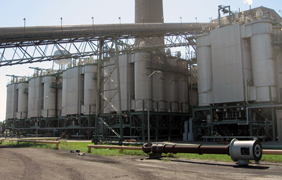Maintaining Operations after Internal Damage to Equipment
When an industrial steam generator experienced a major process upset and damaged their electrostatic precipitator (ESP), they could not shut down to make the necessary repairs. Neundorfer was able to optimize the performance of the precipitator which allowed the plant to find the production point that would allow the equipment to stay in compliance until the regularly scheduled shutdown. The future repairs will take operating margin into consideration so that future events can be tolerated without an operational trade-off.
Many industrial processes require steam for the manufacturing of their product. In many cases fossil fueled or biomass boilers are used to generate steam for their process. This plant used coal-fired boilers to generate their steam. After a lengthy maintenance outage, one of the boilers experienced an upset that damaged the internals of their ESP during a high temperature excursion. This resulted in warping the internal collecting plates, creating close clearances that drove voltage levels very low with high sparking. Maintaining production levels was critical and losing this source of steam production would have had a negative impact.
Neundorfer evaluated the operation of the boiler, data from recent testing, and data on the operation of the ESP. It was concluded the boiler could run at 70% of maximum capacity and meet emission limits if the ESP operation was tuned.
Neundorfer arrived onsite, and after the adjustments to the precipitator were made, the performance allowed the boiler to meet Industrial Boiler MACT emission limits. This meant the plant could stay in compliance until the regularly scheduled shutdown. The second part of the strategy was to develop a cost-effective plan to make the repairs at the next scheduled shutdown.
Planning for the repairs began immediately. Although changes to boiler operations were made to minimize the risk of a future incident, repairing the damaged internals with components less susceptible to heat excursions was part of the plan. The most obvious damage was targeted, but it was also decided to repair the second and third priority items as the operating data indicated future risk to performance if they were not addressed.
The project is underway, but implementing the repair will return the boiler to full steam production with significant emissions compliance margin for the future.


